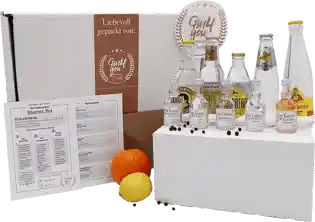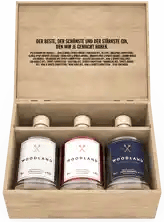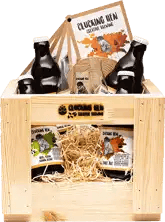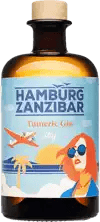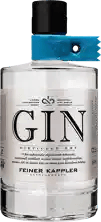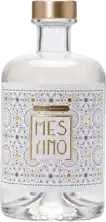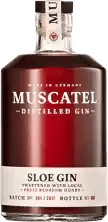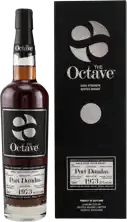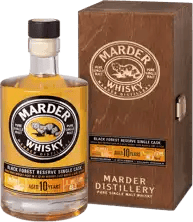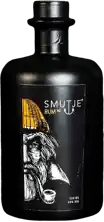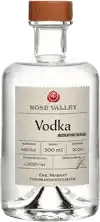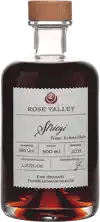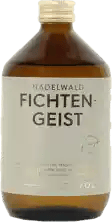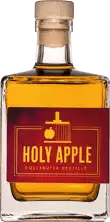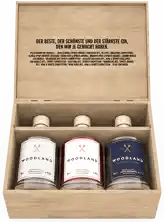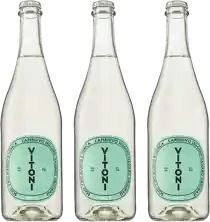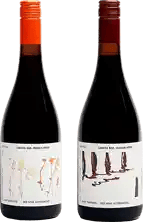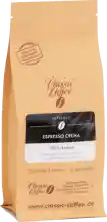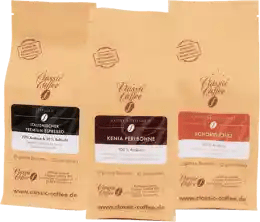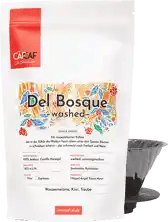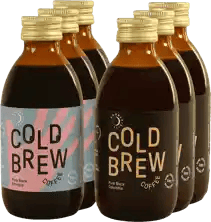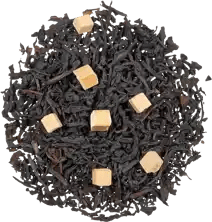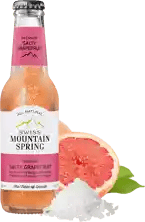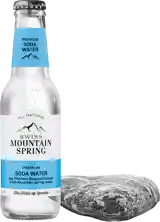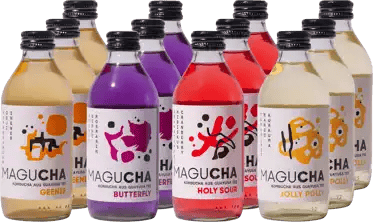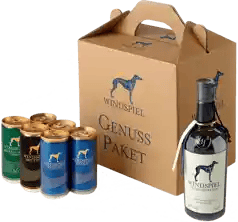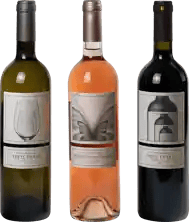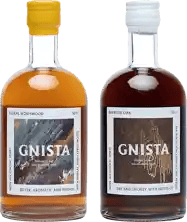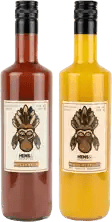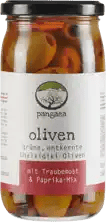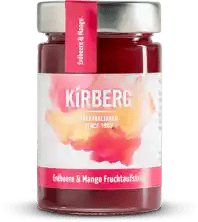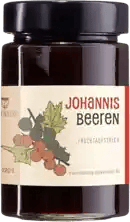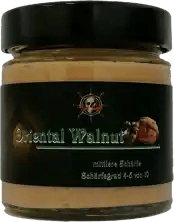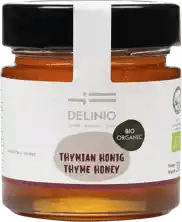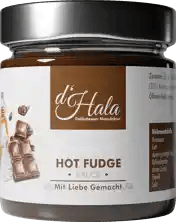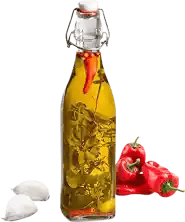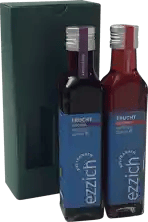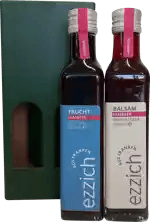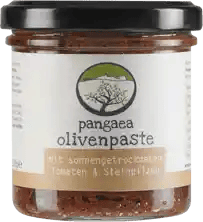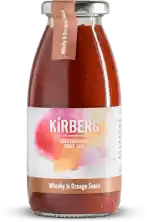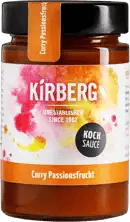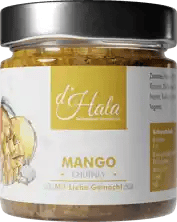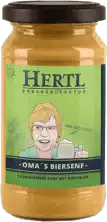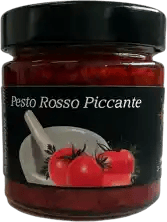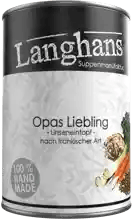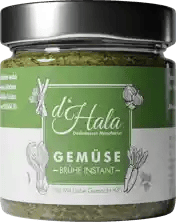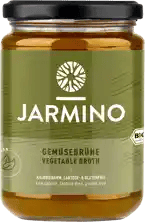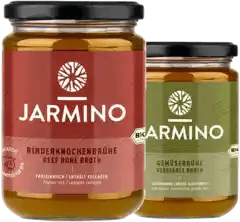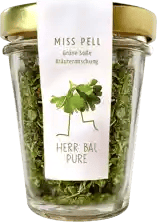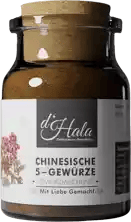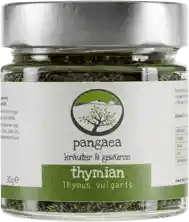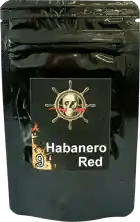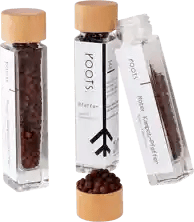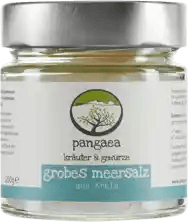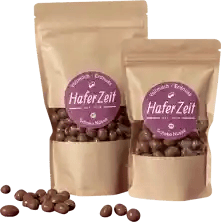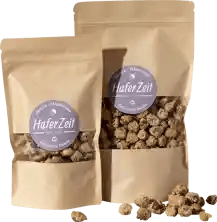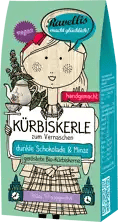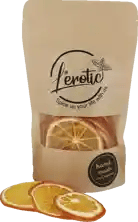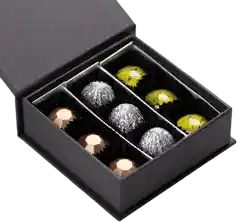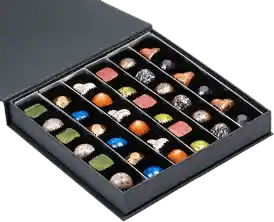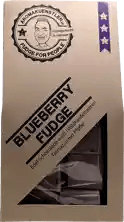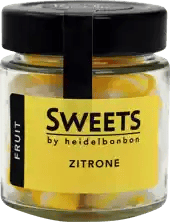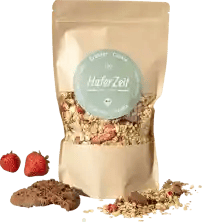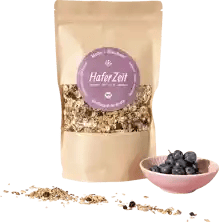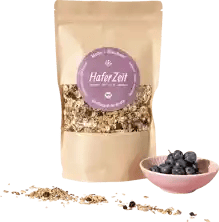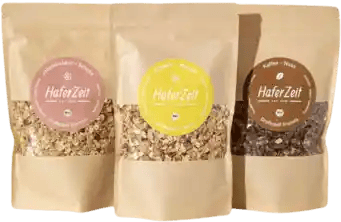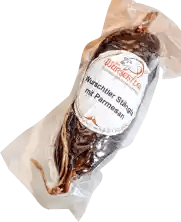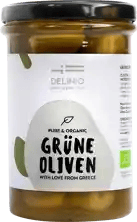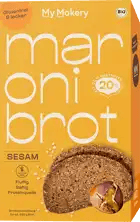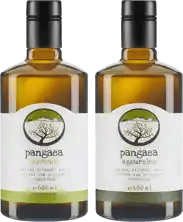Quality instead of quantity!
7,000 independent products
No mainstream
7,000 independent products
Buy gin - Over 900 varieties from manufacturers
If you want to buy g in, you have an overwhelming choice. Ten years ago, the range was nowhere near as wide as it is today. Gin has undergone a rebirth and has since experienced an incredible rise. Thanks to this renaissance, there are now even hundreds of German gins. Fortunately, the internet allows these brands to be present with their products in our online store and for you to conveniently buy gin online - to drink yourself or as a gift for gin lovers.
Our gin online store with a huge selection
As with many drinks and especially spirits, you have to buy gin online if you want to enjoy this huge selection. No store in the world has anywhere near as much space to accommodate all the different varieties and brands. The wonderful selection is also one of the reasons why we created our marketplace.
In our store, you can buy good and special gins from smaller producers and choose from over 400 different brands. Whether it's a refreshing gin and tonic, spicy, floral, sweet or fruity - with us you can filter according to your desired taste and simply buy your London Dry Gin or Dry Gin and order it to your home.
Why is premium gin so popular?
Gin is popular because of its taste and wide variety of flavors. While many drinks are very strictly regulated as to which ingredients may be used, only juniper is strictly specified as the base flavor for gin.
However, gin does not come from juniper as a distillate, but is macerated with juniper. In addition to juniper, the recipes can contain any herbs, spices and fruits - the so-called botanicals. This is the reason why gins differ so greatly in their aroma.
Premium and special gin for private tastings
If you would like to buy gin from us for tastings, you are welcome to hold a small, private tasting at home and experience first-hand how different gin can taste. Some brands work so well with the recipe and re-distillation that you can unmistakably taste nature-identical flavorings.
Which gin is good?
The choice of gin production method always lies with the master distiller. Whether maceration, digeration, steam infusion or multiple distillation is always decided by the master distiller alone. All producers and distilleries naturally aim to capture nature-identical flavors and thus make good gin. The great art of good gin can be roughly divided into the recipe and the distillation.
Recipe: If you look at the beginnings of gin producers, you will see that several different recipes were often tried out until the perfect creation for a really good gin was found. As with cooking, it is also a question of which ingredients harmonize with each other and how much of each ingredient is used. Incidentally, there are good gins with just six botanicals and there are very good ones with more than 50 different ones. In principle, up to 130 different botanicals can be used.
Distillation: In addition to the recipe, the art of distillation is crucial for good gin. Distilling is a traditional craft in many respects. As with any craft, the work can be of good or poor quality.
The more you try, the more experience you will naturally develop. You will soon realize that you can taste the differences between the gins and, above all, the varieties. In our large online gin store, you can search happily and buy excellent and very good gin. If you want to buy gin online, you naturally have the advantage of having a large selection to choose from. You will quickly become an expert and will even be able to distinguish between the different distilleries and production methods.
During production, the master distiller has a lot of influence on the quality of the gin with his process decisions and experience. They not only decide on the method for extracting the botanical flavors, but also on how long or how often the flavors should be extracted.
Of course, the master distiller also has a say in the recipe and the dosage of botanicals. After all, he has a special feel and understanding of aromas and how they will affect the spirit. Ultimately, the master distiller has the entire distilling process in his hands, which is crucial for high-quality, good gin. Buy one that appeals to you because of the combination of botanicals. In our gin store, you can always see the list of botanicals directly below the product. So start with one that suits your taste and taste your way through the wide world of gin bit by bit.
We also have non-alcoholic gin in our range.
You can buy gin online in our online store and compare whether you notice any differences in the alcohol content. Order and enjoy premium gin - that's our promise.
Gin: Frequently asked questions and answers
How do you drink gin?
Gin is best drunk neat and as a gin and tonic. It can develop its aromas perfectly in a tonic. This allows you to taste the individual aromas. In fact, thanks to the high quality, many gins can now also be drunk neat. It is fair to say that most traditional gins were intended more for gin and tonic or as an ingredient in cocktails. The fact that it can now be drunk neat is mainly thanks to the new style of New Western (Dry) Gin.
New Western Dry Gins are no longer so dominant in the juniper note, but instead bring out other botanicals more strongly. You have probably already drunk many of these variants. Since 2015 in particular, the New Western style has established itself very strongly alongside the popular Dry Gin. These variants in particular can and should always be drunk neat. As an online store for special and original drinks, we have a wide range for you. Here you can buy both classic and newer New Western Dry Gins.
Instructions and guidelinesWhen drinking, you should follow at least three steps to enjoy the flavors to the maximum.
- The first step is to hold your nose directly over the bottle when you open it. All the aroma is naturally preserved in the closed bottle and as soon as you open the bottle, it flows upwards together with the alcohol. It's therefore best to take in the concentrated aroma in your nose as soon as you open the bottle.
- Now we come to the actual drinking. The question of how to drink gin is often a philosophical one. Of course, it is absolutely a matter of taste. But to be honest, it's a shame if you mix it directly with another drink and don't even enjoy a drop on its own. That's why gin should always be drunk neat first. If you don't like it, just quickly pour tonic over it and the drink is ready.
The colloquial expression to moisten your lips is certainly appropriate. Once you have poured the gin into your glass, it is best to leave it to stand for a few minutes so that it can develop its aroma in contact with oxygen.
Drinking gin straight is particularly fun if you try to taste the individual aromas. As our sense of taste is very dependent on our sense of smell, it is best to alternate between tasting and smelling all the time. This is the best way to feel the flavors. Especially when you buy a new gin, always remember not to miss out on the pure experience. - After the pure enjoyment, it's time for the gin and tonic. The juniper spirit often develops quite differently in a tonic than it does neat. There are many gins that are not particularly enjoyable on their own, but suddenly develop their hidden aromas and round off with tonic. The choice of tonic is purely a matter of taste. However, it is advisable to always use a neutral tonic water first. This allows the aromatic focus of your G&T to be on the gin itself. Many tonic waters have a sweet note. If you prefer less sweetness and more intense bitterness, it is best to use dry tonic water. In our store, you can not onlybuy spirits, but also order the right tonic water.
Which tonic water to buy for gin?
After you have tried your G&T with a classic tonic water, you can try other tonic varieties and compare whether it harmonizes better with another tonic. Basically, tonics can be divided into classic/neutral, Mediterranean, spicy, tart, fruity and floral. A prime example of a floral tonic is Fever Tree Elderflower Tonic Water. For many, the floral note is far too intense. A good example of a spicy tonic water is Windspiel Herbal Hemp Tonic Water. You can buy this tonic and many other varieties from us, just like gin. With such a huge selection on the market, you could probably search through our online range forever and always discover something new.
The different tonic waters are just as diverse as the different varieties. It's always best to start with a classic tonic, where the bitter note is the main focus. However, you will be delighted to discover new worlds of gin and tonic when a gin suddenly harmonizes much better with a herbal or fruity tonic. Many well-known brands give recommendations for the perfect tonic to go with their gin. This is less common with smaller, regional producers, which you can buy here in our online store. Our producers often leave it up to their customers to decide which type of tonic they like best.
Experience is the key to choosing the right tonic water. The more understanding you have of the different varieties and flavors, the better you can judge which tonic the gin would go well with.
The perfect gin and tonic
Why do some gin and tonics taste better than others? The truth is that the right pairing is not the only key to a good gin and tonic. You can mix the perfect gin and tonic with just three little tricks:
1. the most important thing is ice: you really only want the gin and tonic as flavor components in the G&T - but no water. You can significantly slow down the rate of melting water by filling your gin and tonic glass to the top with ice. Too often you see it with two small ice cubes in it. The solution is very simple: just fill it up with ice. It is important that you use cubed and not crushed ice cubes. The larger the ice cube, the slower the ice melts naturally.
2. the second trick is to pour the tonic water slowly and at an angle down the side of the glass into the glass. This prevents carbonation from being lost - and carbonation is extremely important for a sparkling gin and tonic!
3. the final trick is to top off your G&T with the right fruit or herbs. With so many different varieties, there is no rule of thumb for this. It is best to use the lead botanicals of the gin as a guide. For example, if it is a citrus-oriented gin, then a small dash of lemon and a slice of lemon will work. If it is a spicy gin, then cucumber or a sprig of rosemary could go well with it. If you want to buy gin in our store, you are welcome to follow our drink recommendations or call us at any time so that we can give you a few tips on how to make the tastiest gin. Keep in mind that many gin and tonics benefit enormously from the addition of the right fruits or herbs.
What is gin made of? Botanicals and production
Gin consists of neutral alcohol, juniper berries, botanicals and water. It is not made from juniper berries, but with juniper berries. The basis is therefore simple neutral alcohol, which is normally obtained from the distillation of grain, potatoes or wine. At the end of the distillation of neutral alcohol, you have a pure alcohol of around 96% vol. However, many producers buy their neutral alcohol from other distilleries. There are specialized distilleries that only produce neutral alcohol for other spirits brands. Only a few producers also distil their own base alcohol. In ourgin online store, we not only inform you about all the botanicals, but also about the base alcohol used.
To begin with, the neutral alcohol is often (but not always) reduced to 70% by volume with water. Depending on the manufacturer's objectives, the 96% alcohol could be too aggressive. In addition, the water in combination with alcohol plays an important role in extracting the botanical flavors in the next step.
The magic step in the production of gin is extracting the flavors from the botanicals. Botanicals is a collective term for all kinds of herbs, roots, spices and fruits. The extraction of flavors usually works through maceration - also known as cold extraction. During maceration, all botanicals are soaked in neutral alcohol. Alcohol has a very preservative effect, so you can see a coloration of the liquid after just a few hours. This shows that the future gin has already absorbed the delicious aromas of the botanicals.
The botanicals are usually soaked in alcohol for a few days or a few weeks. Nowadays, some producers macerate several times in order to intensify the aromas in the gin. The digeration method is also used in production. This involves heating the alcohol to 40-50°C while the botanicals bathe comfortably in the alcohol. You can view the full list of botanicals for every gin in our store. If you want to buy a special gin, the botanicals are one of the most important criteria. This way you can see directly whether the style or brand suits your taste.
Another way of extracting the aromas from the botanicals is steam infusion. Here, the botanicals are placed in a kind of basket and placed in the so-called riser tube of the still. The rising steam from the heated alcohol passes through this aroma basket and absorbs the aromas of the herbs, spices and fruits. The different methods used to produce the spirit are of course what make it so exciting.
After maceration, the result is a so-called bathtub gin. This is not distilled again. At most, it is blended again with water to reduce the alcohol content. Of course, bathtub gin tastes less good and not at all balanced. But if you ever have the pleasure of making your own bathtub gin, you will be amazed at how much it tastes like gin.
However, the gins in our online store are all characterized by redistillation. After maceration, the prepared spirit is distilled again. This makes it clear. As with all distillation processes, the distillation of gin also involves separating the middle run from the pre-run and post-run. The pre- and post-run contain by-products such as methanol, which do not belong in our gin.
The beautiful middle run is then reduced to the desired drinking strength with water. You won't find a gin with less than 37.5% vol. because that is the legal lower limit. However, it often has an alcohol content of 40% or more. Gins with a higher alcohol content are generally rounder and are more suitable for mixing cocktails or as a gin and tonic because the aromas do not evaporate so quickly. You can order gin in our online store and compare whether you notice a difference between a lower or higher alcohol content.
Which is the best gin?
Everyone has to decide for themselves which is the best gin in the world. Because gin, like so many things in life, is a matter of taste.
However, the best gin in the world also receives awards.
Here are some gin awards & gin prizes:
- International DLG quality test for spirits
- Europe Wine & Spirits Trophy
- Meininger's International Spirits Award
- Falstaff Gin Trophy
- Wolrd Spirits Awards
- Chinese Wine & Spirits Awards
Buy gin varieties at Honest & Rare - An overview:
Whether as Dry, New Western Dry or Sloe - with us you are sure to find your individual and special gin and can buy it directly online. If you want to delve even deeper into the gin universe, we have prepared an overview of all gin varieties for you. With recommendations, of course. You can buy all of these gins from us.
Distinguishing between gin varieties is not easy for beginners. What is the difference between dry gin and London dry gin? Or what is genever? What are the best types of gin? What types of gin are there? We would like to answer your questions with our overview and present you with a special example of each!
With our overview of gin varieties, we show you the differences and special features and also present one gin per variety from our range of special gins.
The most popular gin varieties:
Dry Gin
Dry gin is the type of gin that leaves virtually everything open: when the ingredients are added, in what order and even whether natural flavors and colorings are used.
For a long time, the style therefore did not have the best image in the gin world. This has now changed because there are simply so many good dry gins. You can enjoy them too: We have a large selection for you in the dry gin category.
Example of a very good dry gin
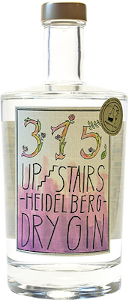
An example of a dry gin is the 315 UPSTAIRS HEIDELBERG DRY GIN from Upstairs Gin. This dry gin is made by hand in a manufactory in Heidelberg and contains no artificial flavors or other additives.
London Dry Gin
The type of gin that everyone has heard of. Even though it has nothing to do with the city of London. Quite the opposite: with the European Union. The latter has drawn up criteria to which London Dry Gins must adhere.
Overall, it is characterized by the fact that it is dry and has a clear note of juniper. All other botanicals should flatter this and accompany the juniper.
London Dry Gin belongs in every good home bar. We have put together all the information and a nice selection of special London Dry Gins for you.
Example of a delicious London Dry Gin
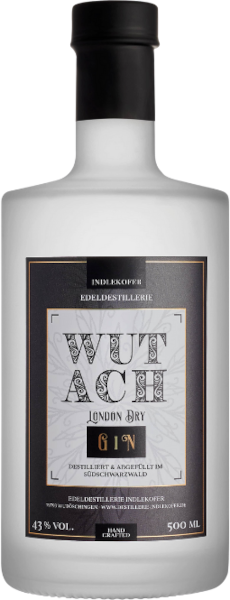
A very good example of a London Dry Gin is the WUTACH LONDON DRY GIN from Edeldestillerie Indlekofer. This gin is 100% produced at the Indlekofer distillery in Wutöschingen, distilled in small batches and bottled and labeled by hand. The gin gets its unique taste from juniper, lavender, citrus fruits, star anise, cubeb pepper and cinnamon and other botanicals.
New Western Dry Gin
...often called New Western Gin or New Western Style Gin - is the gin of the last few years. As the popularity of gin exploded, the makers naturally became more creative and started to develop crazier recipes.
In the process, the New Western Dry Gin crystallized, in which the classic juniper note is increasingly used as a background aroma, leaving room for all the other aromas of the world. Botanicals such as blood orange, mint, blueberry, clove, aniseed and grapes take on the main aromatic role.
New Western style gins are full of surprises and flavorful adventures. Under New Western Dry Gin you will find all the information about the gin variety and can order New Western Dry Gins online.
Example of a New Western Dry Gin
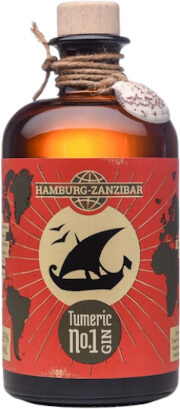
An example of a dry gin is the Tumeric No.1 Gin from Stadtrand&Co. in Hamburg. This New Western style gin gets its golden color and unmistakable aroma from the subsequent maceration with fresh turmeric. Ideal for the wildest cocktail creations.
Sloe Gin
A few years ago, it was still a rarity - if you knew the gin variety at all. Nowadays, sloe gin is on the rise, especially in Germany, and is increasingly finding its way into delicious cocktail creations.
Sloe gin is not actually a gin, but a sloe liqueur. It must have at least 25 revolutions and, as a liqueur-like spirit, 100 grams of sugar per liter.
In terms of taste, it has a lot of variety to offer. If you would like to find out more or buy it directly online, you can find out more under Sloe Gin.
Example of the Sloe Gin variety
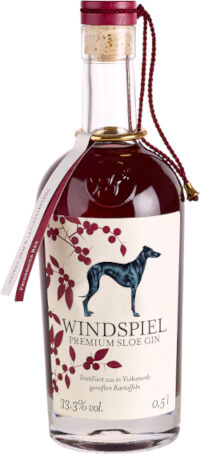
One example of a sloe gin is the Windspiel Premium Sloe Gin from Windspiel Manufaktur. This gin is a must for all fans of fine sloe gin - especially if you are looking for a sloe gin that is not too sweet.
Plymouth Gin
... is a geographically protected designation of origin, unlike London Dry Gin. Every Plymouth gin therefore comes from this region. Ironically, however, only the Black Friars Distillery produces Plymouth gin. Incidentally, it was also the Black Friars Distillery that successfully sued in England in the 19th century and protected its brand and product name. Well, for those who care.
What do I need to know about Plymouth gin?
Apart from the fact that it is a protected term, all you really need to know is that it is somewhat sweet and is used in many cocktails.
Incidentally, there is something interesting to observe in relation to Plymouth Gin and London Dry Gin: There are now quite a few regions that give themselves their own origin name. Think of Munich Dry Gin or the well-known Black Forest Gin, for example. However, these terms are not protected, but pure branding.
Old Tom Gin
... is nothing but a sweetened gin. It gets its sweetness from the addition of sugar. In the 18th century, it was one of the most popular types of gin in England. It is believed that Old Tom gin was created due to the poor quality of alcohol at the time. The sugar was intended to mask this poor taste. The fact that sugar was becoming increasingly available at the time naturally played into the hands of this development.
What do I need to know about Old Tom Gin?
Old Tom gins are sweet. In the 19th century, it was gradually replaced by the better-tasting dry gin and disappeared from the market for a while in the 20th century. It is once again thanks to the hype of recent years that the Old Tom variety has been rediscovered and revived. Old Tom does not play a major role in the craft scene. However, there are brands such as Hayman that produce an Old Tom gin in the style of days gone by.
Genever
Genever is the mother of all gin varieties, so to speak. The name "gin" is not only derived from Genever, Genever also tastes very similar. The Dutch word Genever comes from the Latin Juniperus, which means juniper. In the Netherlands, the juniper spirit is often spelled "jenever".
Genever is also made from neutral alcohol together with juniper and some botanicals such as aniseed or caraway. The difference is that far fewer botanicals are used and the juniper is always clearly in the foreground. However, the decisive factor in the production of jenever is that the neutral alcohol is mixed with malt wine (Dutch: moutwijn) before it is further processed and distilled again. Malt wine consists of rye, barley malt and corn. These are distilled three times and brought to around 50% by volume. Malt wine itself is often mixed with botanicals (i.e. herbs and spices) and sometimes stored in wooden barrels.
What do I need to know about jenever?
Genever is the predecessor of gin and originates from the Netherlands and Belgium. Genever is very similar in taste to gin. As a rule, genever has a sweetish note and an intense aroma. Genever often has a lower alcohol content of 30 to 40% by volume. Another cool fun fact for your next get-together is that genever comes from the Latin Juniperus for juniper, which in turn explains why gin is called gin.
Spiced gin
The spiced gin variety can also be classified as more recent. Here, additional flavors are added after re-distillation - hence "spiced". This is intended to add a flavor that cannot be achieved in the classic way of maceration, digeration or steam infusion. It is also possible for sugar to be added to the gin afterwards.
What do I need to know about spiced gin?
They don't really play a major role as a gin variety. They are often classified under the New Western Style variety. However, as they have a significantly different production process due to the subsequent addition of flavors, they should be distinguished.
We do not yet have the Spiced Gin variety in our range.
Non-gin
No, of course non-gin is not really a variety. But as an online marketplace for special spirits and drinks, we naturally see and observe a lot. One of the current trends is to produce a gin that is not a real gin. What does that mean? Simply a gin without juniper. A neutral alcoholic distillate is mixed with all kinds of different botanicals. By dispensing with juniper, the non-gin naturally does not have any of the typical flavor notes.
The non-gin can be seen as an extension of the New Western Dry Gin, in which the juniper takes a back seat. The focus here is on distilling a versatile and complex spirit from a wide variety of ingredients that perfectly reflects the desired aroma. They are also characterized by the fact that they are wonderful to drink straight, work well with tonic water and can be used in many different ways in cocktails.
You can buy non-gin from us: Two good examples are the NORDCRAFT Dry Botanical Spirit, which is very fresh and spicy with 20 botanicals such as dill and cucumber, and the 13 Drunken Botanicals, which is very light, lemony, floral and grassy with its 13 botanicals.
Non-alcoholic gin alternatives:
Although the term alcohol-free gin is often used, it is not entirely correct. We therefore refer to non-alcoholic gin alternatives. Whether pure or for gin and tonic. The alternatives to normal gin are just as suitable.
Brilliant!

Bitte bestätige deine Anmeldung noch eben - du hast eine Bestätigungsmail von uns. Klicke darin auf den Link. Danach bekommst du deinen Rabattgutschein.

